Writer Alex Segura is certainly on a bit of a hot streak at the moment… At DC he is currently penning The Question: All Along the Watchtower, a new mystery series that follows Renee Montoya as she tries to solve a murder aboard the Justice League’s space station. Meanwhile, over at Marvel, Segura has also been writing the epic Star Wars: The Battle of Jakku, which tells the story of the final conflict between the Empire and the Rebel Alliance.
Amidst all of this, today also sees the publication of Alter Ego – Segura’s terrific new prose novel set in the world of comics publishing. It’s a noir mystery thriller that, while connected to his previous book Secret Identity, can be read on its own. Newsarama caught up with Segura to find out more about the new novel, and his upcoming Daredevil tale, Enemy of My Enemy…

Newsarama: Alex, first off, how would you sum up the story of Alter Ego to our readers?
Alex Segura: Alter Ego is a “standalone sequel” to my LA Times Book Prize-winning crime novel, Secret Identity, which was a murder mystery set in the comic book industry in the ’70s. You don’t need to read Secret Identity to understand or dive into Alter Ego, but it certainly won’t hurt.
Alter Ego is the story of Annie Bustamante, a former comic book artist who left the industry to become a film director. We find her in the present day, stuck between projects after her last movie was shelved for tax reasons. She’s been picking at a fun side project, writing and drawing a comic based on the long out-of-print character that got her into comics as a kid, The Legendary Lynx. Suddenly, Annie is contacted by “Triumph Entertainment,” a company that claims to be the evolution of Triumph Comics, the company that first published the Lynx in the ’70s. They’re relaunching and building a media empire around the company’s lost IP and they want Annie to spearhead a new Lynx comic, which would partner with an in-production TV series helmed by disgraced director Arturo Spinoza. Hesitant but also aware of the dream gig being offered to her, Annie accepts. Almost immediately, she’s contacted by a mysterious, encrypted account named Apparition that warns her she’s heading into troubled waters. Fairly soon, Apparition proves correct – as Annie uncovers a dark conspiracy hellbent on preventing the world from knowing who actually created the Lynx, even resorting to murder to keep the truth buried.
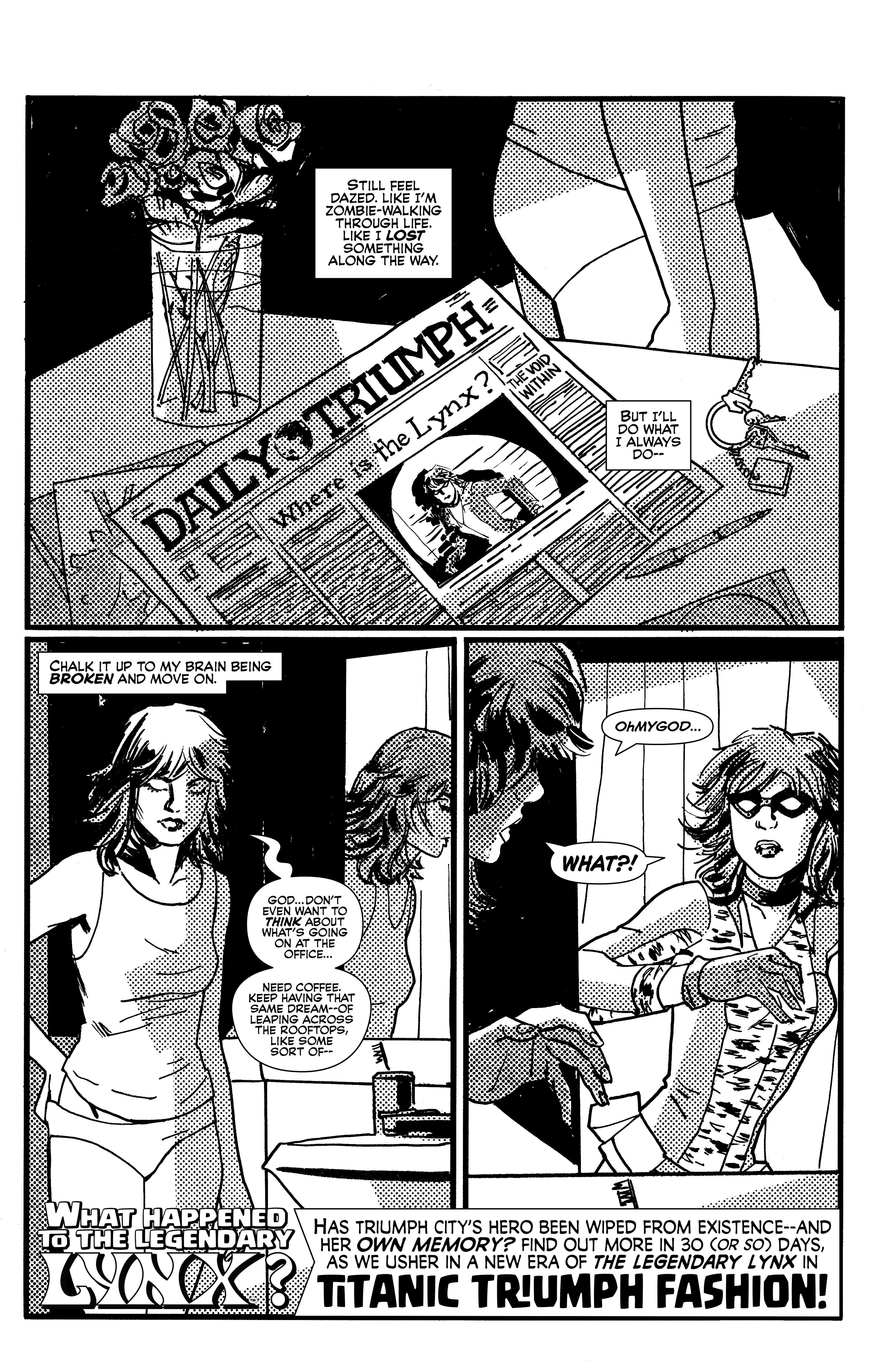
How does the book connect to Secret Identity?
Both are in conversation with each other – they’re sides of the same coin. Secret Identity spotlights Carmen Valdez, a queer Cuban-American woman who moves to New York to pursue a dream of writing comics. She gets a job at Triumph as secretary to the editor in chief, but soon realizes it’s not a path to writing. When she’s approached by a colleague to create a new female crime-fighter for Triumph, she jumps at the chance, but there’s a catch: she has to do it in secret. When that collaborator is murdered, Carmen is forced to investigate his death to reclaim her character, which was truly and deeply part of her.
The connective tissue is the Lynx – the character Carmen co-created with legendary and tragic artist Doug Detmer. Both stories present situations where talented creators are presented with their dreams with powerful, dangerous caveats: first Carmen having to create in secret and then Annie having to continue the Lynx’s adventures under the purview of people who are more interested in money than content. Both books showcase two very different eras of comic book history, and the challenges of art vs. commerce with a murder mystery and thriller backdrop.

You work in comics yourself and these books are very much about that world. What makes it such a ripe medium and industry to explore in these novels?
I think people love novels that transport them to worlds they’re not familiar with – and while comics are everywhere in terms of pop culture, the inner workings of the industry are still a mystery. Plus, I believe that noir is the kind of thing that can happen in any setting – outer space, sports, comics – so it was fun to weave a mystery/thriller through this world I was really aware of. The contrast between the reality of comics (business meetings, P&L sheets, options) and the IDEA of comics (colorful pages, word balloons, superheroes) make for a fascinating setting.
The book has some wonderful illustrations by Sandy Jarrell. What made Sandy the right artist for these two books, and what do you love about his work?
Sandy’s just one of the best in the business. I’ve known him for a long time and it’s been such a treat to watch him develop. When I was thinking about the art sequences in Secret Identity, I knew we needed someone who wasn’t just going to mimic the style of the era, but really get into it and make it their own. Sandy’s not only a wonderful artist, but he’s a student of comics history, and his contribution to these books cannot be understated. It’s been one of the most fulfilling creative collaborations of my career.
Alter Ego touches on questions of character creation and ownership – a subject that’s very pertinent to the comics industry. Are you worried about the future of rights for comics creators given things like increasing pressures from corporate owners and the current proliferation of AI?
I think the AI bubble will self-destruct once people actually engage with the parasitic “product” that those things will create. You can’t replicate creativity, but the existence of AI attempting to do it is certainly not helping. People have always wanted shortcuts to creativity – a path to getting to the thing, whether it’s a book, comic, movie, or whatever, faster. But the reality is that creativity is a lot of work, and it takes years to hone your craft, and those years are often fraught with rejection and defeat.
I think the ongoing challenge for creatives is finding ways to fund your stories without having to make concessions to those stories, whether it’s an editorial thing or rights-based, like giving up film or media just to see the book exist. On the flipside, the people funding the work need to make it worth their effort – so that’s the push and pull that’s been around forever.
You’ve said that this was a difficult book to write. How so?
It was hard because I’d envisioned Secret Identity as a standalone, but when I wrote the epilogue, I saw another idea forming. But sequels are inherently hard – you’re already being compared to the first one, and in this instance, Secret Identity did very well and was well-received. So, the struggle came in deciding what kind of story to tell. I knew I wanted it to be set in the modern day and reflect back at Secret Identity, but I didn’t want it to feel like a rehash. But once Annie appeared, the story fell into place – and I think Alter Ego stands on its own, and fits nicely with what’s come before, which was really hard. I feel really proud of the book, now that it’s done!

You’re also working on a Daredevil novel for Marvel, titled Enemy of My Enemy. What can you tease about that book?
Yes! I’m thrilled to be working on this. It’s very much a legal drama, where Matt must defend someone for the crime of murdering one of his deadliest foes. Part of Matt feels relief this villain is gone, but another part of him knows that justice shouldn’t skip past anyone, even if the accused is none other than Frank Castle, the Punisher!
What appeals to you about writing for Matt Murdock and his world?
Matt is messy. Daredevil is messy. I like writing about complicated people who don’t always make the right choices, and this is very much Matt’s worst-case scenario. Part of him wants to just step away and let the chips fall, but that’s when people need Daredevil most.
How different do you find writing for established characters like Daredevil compared to your own creations? Do you approach the two types of books differently?
Well, the big difference is the pre-existing characters are baked already, so I don’t need to spend as much finding out how they act or what makes them tick. But the challenge with a character like Daredevil is that he’s been written for so long, in so many different ways, that I have to figure out how my version of DD fits in, and where. But that’s also part of the fun!
Alter Ego by Alex Segura is published today by Flatiron Books.
The Question: All Along the Watchtower #1 sets up a fascinating murder mystery in the Justice League’s home…

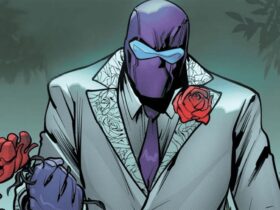






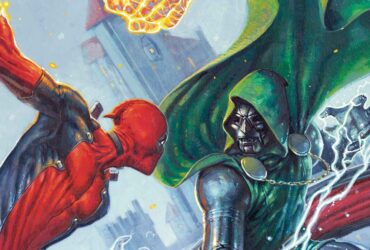
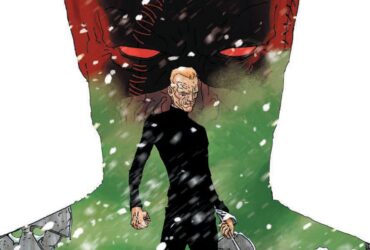


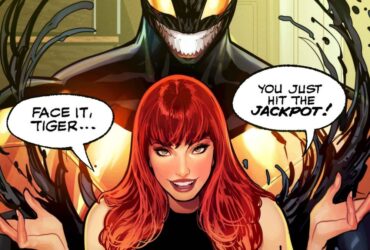
Leave a Reply